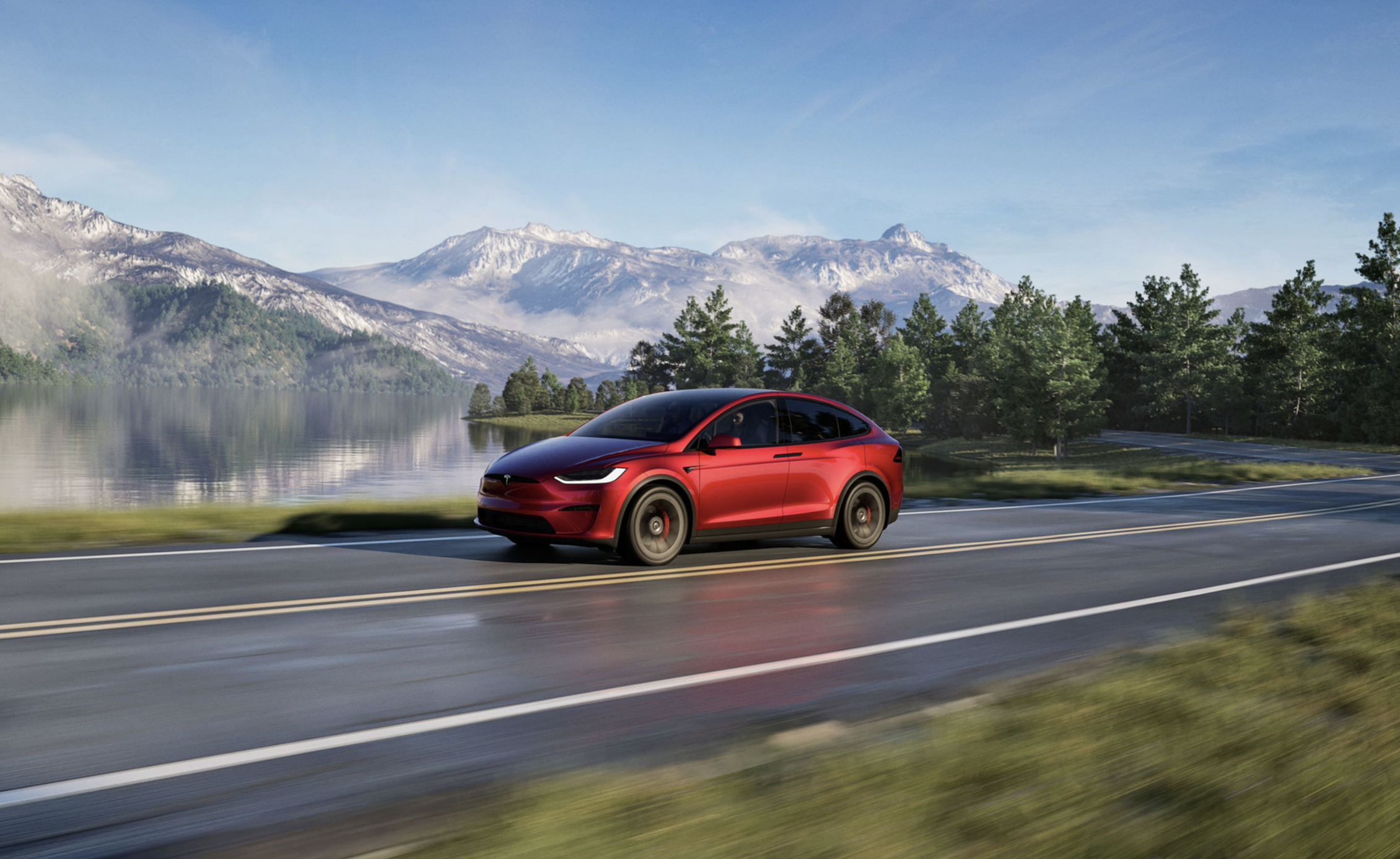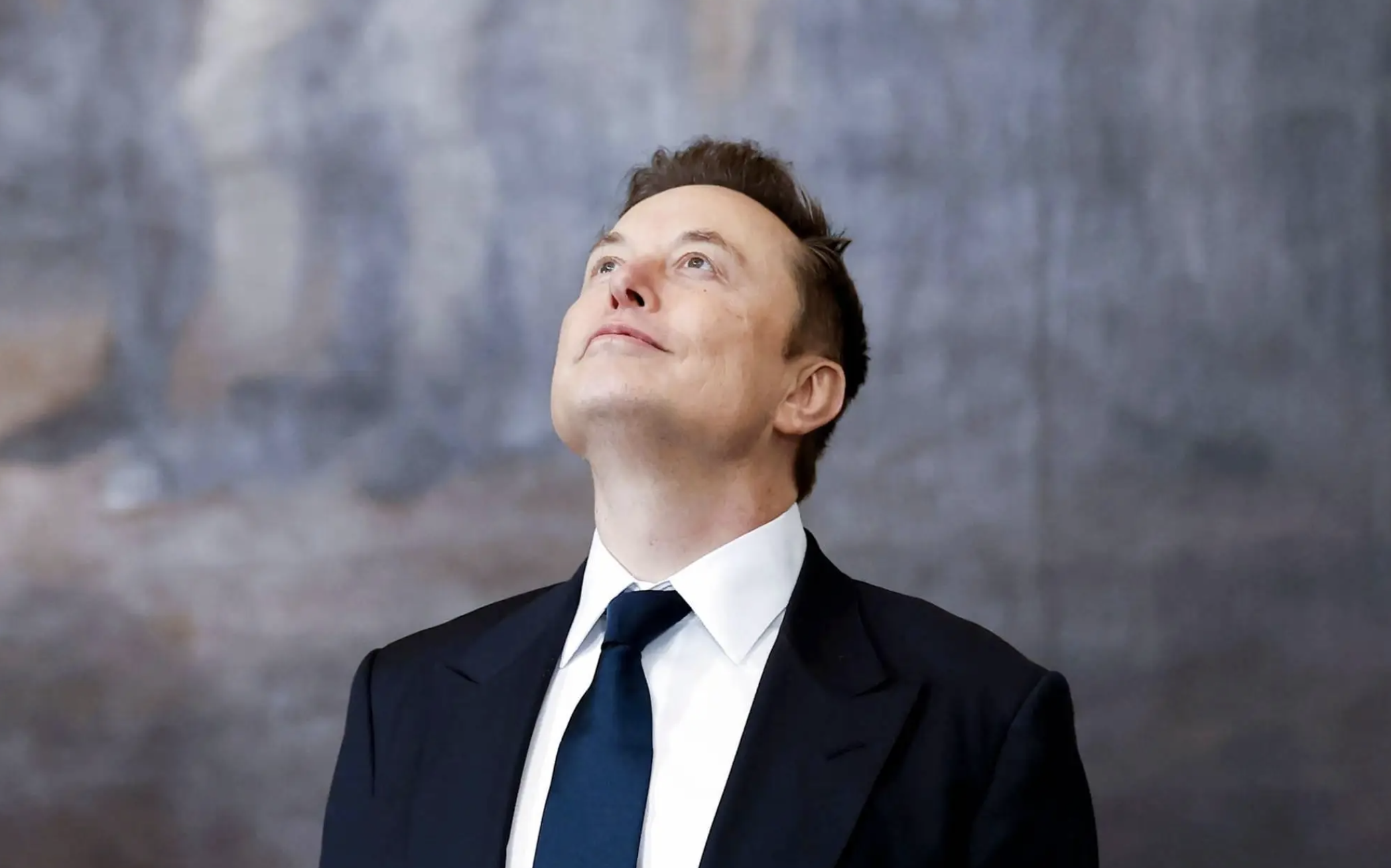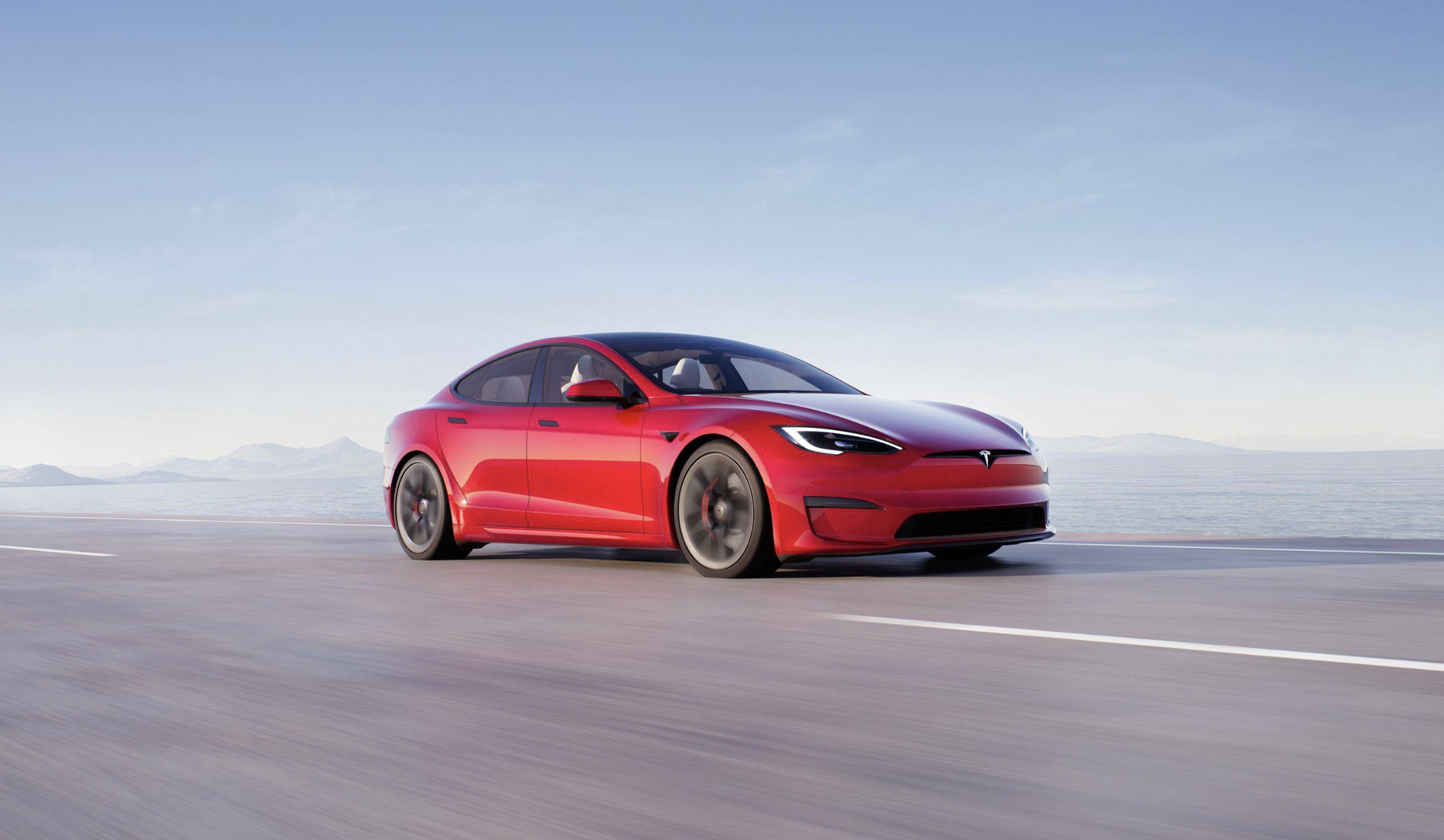Sales Plunge! Musk Faces Employee "Rebellion," Leaving Tesla at a Crossroads
![]() 05/14 2025
05/14 2025
![]() 444
444
Tesla demands a new narrative.
Tesla might indeed be experiencing a fall from grace this time.
In the first quarter of 2025, Tesla's global deliveries plummeted 13% year-on-year to 336,700 units, with quarterly sales comparable to BYD's monthly figures, marking the lowest quarterly delivery since the second quarter of 2022. Its main models, Model 3/Y, delivered 323,800 units, down 12% year-on-year, accounting for over 95% of total sales. Newer models like Cybertruck fared poorly with only 12,800 units, even trailing behind some domestic newcomers.
Tesla's current situation mirrors a "Game of Thrones" scenario, with severe market sales declines on one hand and a trillion-dollar market valuation dominating the automotive industry on the other. This paradoxical state of ice and fire is inherently unstable, with just one more strain potentially toppling Tesla.
At this pivotal moment in 2025, Tesla needs a fresh story to tell.
Struck hard in two major markets, Tesla stands at a crossroads.
In 2025, Tesla experienced an unprecedented sales decline in its two primary global markets, Europe and China.
According to data from the European Automobile Manufacturers Association (ACEA), Tesla's sales in Europe plummeted 36% year-on-year to 53,200 units in the first quarter of 2025, with core markets like Germany and France seeing declines exceeding 60%. Surprisingly, this downturn occurred amidst a 37% increase in overall electric vehicle sales in Europe, causing Tesla's market share to plummet from 1.8% in 2024 to 1%.

Image source: Tesla
In the Chinese market, Tesla's April sales halved year-on-year to 30,700 units, with the dominance of Model Y and Model 3 eroded by local brands like BYD and Li Auto. BYD, in particular, sold over 380,000 units in April, up 21.3% year-on-year. Unbeknownst to many, BYD, an old rival, has already surpassed Tesla by a significant margin.
Tesla's sales crisis is not due to a single factor but the concentrated outbreak of multiple contradictions.
Firstly, lagging product iterations have become a critical weakness. In Europe, consumers postponed purchases awaiting the refreshed Model Y. While Tesla attempted to alleviate wait-and-see sentiments through price reductions and promotions, it instead exacerbated them, further cooling the market.
Secondly, political risks have significantly intensified. Musk's public support for Germany's far-right political party and controversial remarks have led to a surge in negative sentiment towards the Tesla brand among European consumers. A relevant survey in Sweden showed that the proportion of consumers with a negative view of Tesla soared from 47% to 63%.
Moreover, the phasing out of subsidies and insufficient localization have further weakened competitiveness. France cut its electric vehicle subsidy budget by 33%, while European automakers such as Volkswagen and BMW reduced costs through localized production and launched cost-effective electric models, directly squeezing Tesla's market space.
More notably, the European strategies of Chinese automakers are rewriting market rules. BYD entered the European premium market with the "Tengshi" brand, achieving over 200% year-on-year sales growth in the first quarter of 2025. Its plug-in hybrid models have become the first choice for family users due to their long range and low price.
Meanwhile, NIO and Xpeng have gradually penetrated the Nordic market through a localized strategy of "technology + service," not only weakening Tesla's differentiated advantages but also marking the transformation of Chinese electric vehicles from "cheap substitutes" to "technology leaders."
In the Chinese market, Tesla faces even more complex challenges. The rise of local brands has completely changed the competitive landscape: on one hand, the dense launch of 200,000-300,000 yuan sedans such as Xiaomi SU7 and Zeekr 007 has quickly diminished the effect of the Model 3 facelift; on the other hand, new technologies like the 800V high-voltage platform and city NOA in smart SUVs like Xpeng G6 and Li Auto L6 are continuously eroding Model Y's market space.
Compared to the average 2-3-year product cycle of Chinese brands, Tesla's existing platforms have shown signs of fatigue, gradually falling behind in charging efficiency, smart cabins, and other aspects. Additionally, the younger consumer group's increased identification with local brands, coupled with the intensification of the "price war," has continuously weakened Tesla's proud brand premium advantage. Experts from the China Passenger Car Association believe that if Tesla fails to accelerate the pace of new product launches, it may face even more severe market challenges.
While hit hard in two major markets, this is not Tesla's only hidden danger. Internal issues may be the final straw that collapses Tesla.
Internal and External Turbulence: Tesla Employees' Open Letter "Rebelling" Against Musk
Tesla's internal issues have reached a boiling point.
Last month, a group claiming to represent Tesla's "current and former employees" issued a harshly worded open letter demanding that Tesla "continue to move forward without Elon Musk."
The implication is that Musk has become the biggest factor hindering Tesla's progress.
The letter stated, "As Tesla's public face, Musk's personal image has suffered irreparable damage, and this negative impact has become a burden we have to bear. Now we stand at a crossroads: if Musk continues to lead the company, as consumers abandon purchases, we will face a more severe decline; on the contrary, if we choose to part ways with him, we can truly allow product strength and brand mission to be tested by the market."

Image source: Sohu Auto
Of course, this open letter is not merely an emotional outlet but a rational analysis of Tesla's internal issues. The letter pointed out that Tesla is facing "large-scale demand problems." It revealed that Tesla currently has a backlog of thousands of new Model Y units, a number that is close to or exceeds the weekly production output of the Model Y line at the Texas Gigafactory, indicating a serious backlog for a superfactory.
To support their argument, the letter also cited data indicating that while overall electric vehicle sales in the U.S. market increased by 10% year-on-year in the first quarter of 2025, Tesla's sales declined by 9%, a comparison that undoubtedly exacerbated internal anxiety about the company's development direction.
Overseas media outlet Electrek also reported on May 11 that Tesla had informed workers responsible for the Cybertruck and Model Y production lines at its Texas Gigafactory to take a full week off. Business Insider and Reuters confirmed this news, with some workers notified to take a vacation in the last week of May. Workers also revealed to the media that their actual working hours have been unstable since February 2025, with multiple instances of early dismissal, and attempts to work overtime may even result in disciplinary action.
These front-line production insights lend credibility to the employees' open letter's claim about high Model Y inventory, as production lines would not need to slow down or stop so frequently if orders were sufficient.
Currently, the employee who issued the open letter has "resigned swiftly." In fact, Tesla's suppression of dissenting voices is not an isolated incident. Another manager named Jared Ottmann was reportedly fired in January 2025 for publicly criticizing Musk's inappropriate remarks on the X platform.
The accumulation of these events undoubtedly draws deeper scrutiny from the outside world towards Tesla's corporate culture and internal governance.
As Musk's "Iron Man" aura fades, can Tesla uphold its trillion-dollar market value ambition with tangible technological breakthroughs? Given the intensity of competition in the automotive industry and the speed of Chinese automakers' overseas expansion, it is challenging.
Low-Cost Cars, Autonomous Driving, and Robots: Tesla's "Three Pillars" for Salvation
Regarding Tesla's low-cost models, they have been in a state of "Schrödinger's Cat," with no definitive word on whether Tesla has truly abandoned this segment or not. It has been mere rumors without a conclusive official statement.
It was not until the first-quarter earnings call on April 22 that Tesla's Chief Financial Officer, Vaibhav Taneja, officially announced, "We remain focused on launching cheaper models as soon as possible, with production still planned to start in June." If the plan goes smoothly, a Tesla electric vehicle priced at around $30,000 will attract consumer attention.
It is reported that the upcoming economical model is expected to adopt a mixed platform strategy, combining Tesla's next-generation platform with existing Model 3/Y architecture components, allowing production on existing assembly lines in Fremont, California, Austin, Texas, and potentially Shanghai and Berlin. Compared to a brand-new platform, the new economical Tesla is expected to support autonomous driving and be compatible with Full Self-Driving (FSD).

Image source: Tesla
Furthermore, Tesla expects to provide more details about the economical model in June. Compared to Robotaxi, this could be the biggest factor driving Tesla's stock price in the coming months. It is believed that this model priced around $30,000 can help Tesla resume sales growth.
The market has long anticipated this affordable vehicle as interest in Tesla's cheapest model, the Model 3, wanes. According to Cox Automotive estimates, Model 3 deliveries in the U.S. were 52,520 units in the first quarter of this year, down from 57,928 units in the fourth quarter.
While launching a new Tesla model may help drive new sales, there are also concerns that Tesla may compromise on quality, undermining brand value. Morgan Stanley stated in a research report on April 22, "While many investors hope Tesla will keep a low profile and continue producing cheaper electric vehicles, we believe this is not at all the strategy Tesla will pursue in the future."
In addition to low-cost models, one of the reasons Tesla can continuously maintain a high stock price is that investors are betting on the future. The market does not view Tesla as merely an automaker but as a cutting-edge technology company, with stock price expectations tied to Tesla's artificial intelligence technologies, such as autonomous driving and robotics.
Low-cost cars, autonomous driving, and robots: these three factors could become lifesavers or the final straw that collapses Tesla. Tesla does not have much time left, as the shelf life of "pie in the sky" hinges on the countdown to implementation. The capital market can turn on a dime when the time comes.
For Tesla, 2025 is both a year of crisis and transformation. Will it be the starry sea of future technology or the remnants of a burst bubble? It all hinges on 2025.
Source: Lei Technology








